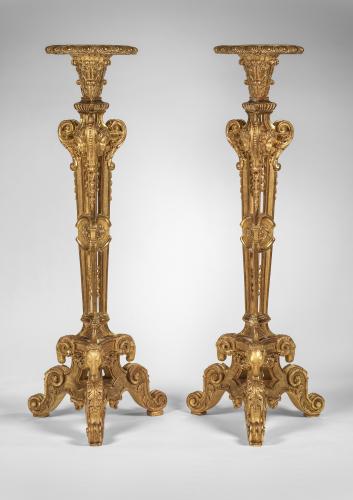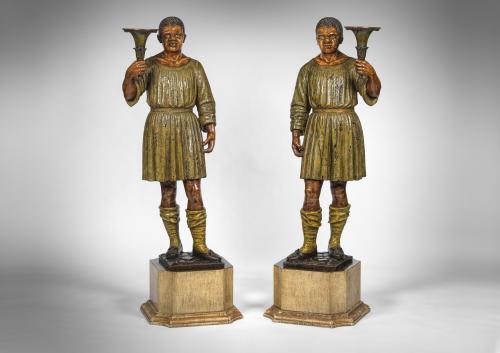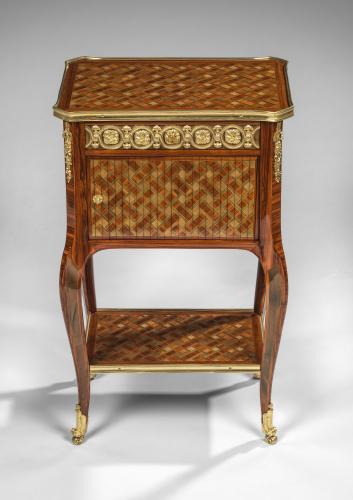

Price on application
This object is eligible for a Certificate of BADA Provenance
The BADA Standard
- Since 1918, BADA has been the leading association for the antiques and fine art trade
- Members are elected for their knowledge, integrity and quality of stock
- Our clients are protected by BADA’s code of conduct
- Our dealers’ membership is reviewed and renewed annually
- Bada.org is a non-profit site: clients deal directly with members and they pay no hidden fees
A George III Mahogany Cabinet Attributed to William Vile Circa 1760.
The mahogany top with moulded edge above a pair of large doors, veneered with beautifully figured mahogany, having a single large oval cartouche of egg and dart moulding, with matching scrolling acanthus leaves top and bottom.
These are either side of a pearled moulding down the centre, this central cartouche being flanked either side by five simulated drawers with original handles and escutcheons.
Below a richly covered moulding the base of two drawers surmounting a floral carved moulding, raised on impressive lion paw feet. The interior is fitted with a single shelf.
A similar piece made for The Earl of Strathmore and later in the collection of Howard Reed is illustrated in the Dictionary of English furniture by Ralph Edwards Page 185 fig 23.
Geoffrey Beard illustrates in English Furniture 1500 – 1840 a pair of commodes fig 3 Page 145 that have very similar doors with dummy drawers flanking a carved oval panel.
The pair of commodes were made for the Earls of Leven and appear to have identical handles and have also been attributed to William Vile.
Provenance:
Braxted Park, Essex
Braxted Park is first recorded as being a Deer Park in 1342 when it belonged to the Countess of Pembroke, prior to the purchase of the estate in 1650 by Thomas Darcy. His son, Thomas Darcy, abandoned the old house, which was situated close to Braxted church, and built Braxted Lodge on the site of the present house in 1680.
In 1708 the park was described as having been extended to 300 acres with three large ponds. The estate was then purchased by Peter Du Cane (I), a cloth merchant and entrepreneur. He reconstructed the house with the help and advice of Isaac Ware, Thomas James and Robert Taylor.
Peter lived at Braxted Lodge from 1751 until his death at the age of 90 in 1803. Peter Du Cane (II) then inherited the park at the age of 62 and proceeded to carry out extensive alterations to the house and park. Du Cane died in 1823 and the estate was passed to his son Peter Du Cane (III) who renamed the house Braxted Park.
Peter Du Cane died in 1841 and the estate was passed on to his cousin Charles Du Cane who maintained the estate in much the same condition. The estate was finally sold by the Du Cane family to William Boulton in 1919, who then sold it to The Plessey Company in 1947.
The house was occupied by Sir Allen Clark, chairman of the company and subsequently by his son, Michael Clark. The estate is now owned by a family trust and managed by Sir Allen Clark’s grandson, Duncan Clark who came out of a 17 year banking career in the City to devote all his energies full time to making Braxted a thriving and self sufficient diversified rural business.
Dimensions
48 x 25 x 61 in high (122 x 63.5 x 155 cm)The BADA Standard
- Since 1918, BADA has been the leading association for the antiques and fine art trade
- Members are elected for their knowledge, integrity and quality of stock
- Our clients are protected by BADA’s code of conduct
- Our dealers’ membership is reviewed and renewed annually
- Bada.org is a non-profit site: clients deal directly with members and they pay no hidden fees




